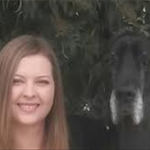We often use barriers for the dogs’ protection but at times these barriers can have side effects; one side effect is barrier frustration.
The challenge to owners is missing the right cues and trying to fix the wrong component. Barrier frustration can be stressful for dogs and owners alike. In this article we’ll take a look at one common barrier and its side effects.
Leashes are used to keep our dogs safe and near us as well as to respect the space of others and their dogs, etc. Many places have leash laws requiring dogs to be on leash in order to be in public. While I don’t have anything against leashes, they are certainly not natural for dogs. When leashes are involved the dog does not have control of space (that is, assuming the human does). This may not seem bad at first but let’s take a closer look.
If another dog is approaching you while you are out with your dog and your dog is not sure about the intent of the approaching dog, a leash stops your dog from having the ability to back away. On the other hand, if your dog wants to approach another dog and the leash does not allow your dog to approach, a leash stops the opportunity to move forward. Both scenarios are setting the dog up for frustration. Frustration in itself is not necessarily a bad thing but with frustration often comes stress and stress has a cumulative effect.
Dogs who are frustrated or stressed often are pushed to their threshold of fight, flight, or freeze response. Many dogs will chose flight before fight while some will chose an alternative freeze response. The problem is that the leash doesn’t allow for flight so the dog is faced with the choice fight or freeze. If the other dog does not appear to be responding to the freeze response the dog may be forced to fight.
This is where frustration changes to aggression.
As I mentioned earlier, many people try to ‘fix’ the wrong component.
Many people focus on the aggression. Let’s say the frustrated dog chooses to aggress in the form of showing its teeth or growling but does not lunge or bite. If we focus on getting rid of the snarl we may end up with a terrible thing: a dog that bites without warning. I personally would rather have a dog that warns and doesn’t act, than a dog that acts without warning. Let’s take a deeper look at what to address if the aggression isn’t the right component.
It is my opinion that most aggression is caused by fear, frustration, and stress.
Let’s say this dog is acting out of fear. It makes sense to treat the fear rather than the aggression, here’s why… if the dog is not fearful, it won’t be stressed about the fear or frustrated about the fear. Without the fear, the dog does not feel the need to snarl in the first place. That is what I call treating the cause, not the symptom.
How do we treat the fear? Contact us because each case is different.
 Krystal Ellingson CDBC CPDT-KSA
Krystal Ellingson CDBC CPDT-KSA
Krystal Ellingson CDBC CPDT-KSA, is the founder of Speak Dog, the first dedicated ‘positive’ dog training company in the Tri-City area where she lives. She is a Certified Dog Behavior Consultant with the International Association of Animal Behavior Consultants and a Certified Professional Dog Trainer with both Knowledge and Skill accreditations with the Certification Council for Professional Dog Trainers along with a list of other credentials, certificates, and affiliations.




 Krystal Ellingson CDBC CPDT-KSA
Krystal Ellingson CDBC CPDT-KSA


